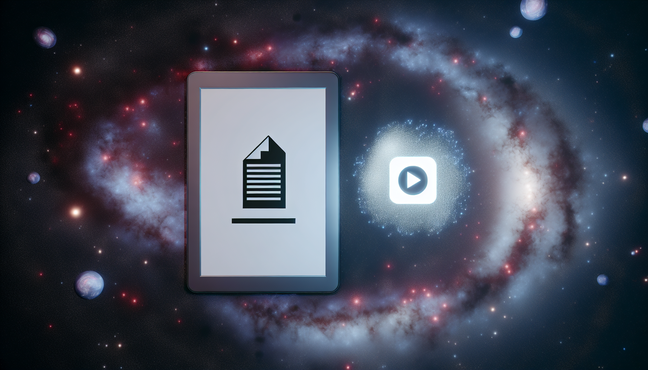Introduction to University of Milano-Bicocca
The University of Milano-Bicocca, established in 1998, is one of Italy’s most dynamic and innovative higher education institutions. Located in the vibrant city of Milan, the university is known for its modern campus and a strong emphasis on research and interdisciplinary studies. With a diverse array of programs across various fields including humanities, sciences, economics, and law, it caters to a broad spectrum of academic interests.
One of the university’s distinctive features is its commitment to integrating academic learning with real-world experience. Milano-Bicocca offers students numerous opportunities to engage in internships and collaborative projects with local industries, enhancing their practical skills and employability. The institution boasts a welcoming international environment, attracting students from over 100 countries, which enriches the cultural and educational experience.
Research plays a vital role at Milano-Bicocca, with a strong focus on innovation and social impact. The university has developed state-of-the-art facilities and labs to support advanced research initiatives. Additionally, its faculty consists of experts and scholars who are leaders in their fields, providing students with quality education and mentorship. For detailed insights into the courses offered, prospective students can explore the comprehensive course descriptions available here.
Understanding Course Descriptions and Syllabi
Course descriptions and syllabi serve as essential tools for students navigating their educational journey. A well-crafted course description provides a snapshot of what to expect, outlining the course’s objectives, content, and any prerequisites necessary for enrollment. This helps students identify courses that align with their educational goals and interests.
Moreover, the syllabus acts as a roadmap for the semester, detailing the schedule, assignments, grading criteria, and policies. It establishes clear expectations and promotes accountability between students and instructors. Familiarizing oneself with a course syllabus can also aid in time management, as it lays out key dates and workload expectations.
Additionally, engaging with these documents can enhance a student’s academic experience. For instance, understanding the scope and sequence of a course can inform study habits and preparation strategies, greatly influencing academic success. As such, students are encouraged to invest time in reviewing course descriptions and syllabi before making decisions about their course selections, ensuring they choose classes that not only meet degree requirements but also foster personal and professional growth. For further discussion on this topic, you may explore more about the significance of detailed course outlines on our website Course Description.
How to Access Certified Course Descriptions and Syllabi
To access certified course descriptions and syllabi, follow these steps:
- Visit the Official Website: Start by navigating to Course Description. This site contains a comprehensive database of course information.
- Search for Your Institution: Use the search bar to enter the name of your institution or specific course you are interested in. This will help you locate the relevant course descriptions and syllabi.
- Select the Appropriate Course: Once you find your institution, browse the list of courses available. Click on the title of the course for which you need the description or syllabus.
- Download the Document: On the course details page, look for options to download or print the course description and syllabus. This might be in PDF format, which can be easily saved or printed for your records.
- Contact Support if Needed: If you encounter any difficulties, utilize the contact form provided on the website for further assistance.
By following these steps, you can efficiently gather all necessary documentation for your applications.
GPA and ECTS Explained
The grading system at universities is essential for evaluating student performance and translating academic achievements across different educational systems. At the University, the grading system predominantly operates on a Grade Point Average (GPA) scale, which operates from 0 to 4.0. A GPA of 4.0 indicates exceptional academic performance, while lower GPAs reflect varying levels of achievement.
In parallel, the European Credit Transfer and Accumulation System (ECTS) plays a critical role in facilitating student mobility across Europe. ECTS credits are awarded based on the total workload required to achieve the learning outcomes of a course, with 60 credits typically representing a full academic year of study. This system allows for easier transfer of credits between universities, promoting an integrated European Higher Education Area.
By aligning GPA calculations with ECTS credits, the University ensures that students can seamlessly transition between universities, fostering a more cohesive educational environment. For those interested in the specifics of grading scales, more detailed information can be found at Course Description, which outlines various grading policies and their implications for academic success.
Tips for Successful Application to Milano-Bicocca
Applying to Milano-Bicocca can be competitive, but following these tips can significantly enhance your chances of acceptance:
- Understand the Requirements: Each program may have specific admission criteria and prerequisites. Carefully review the guidelines on the Milano-Bicocca official website to ensure you meet the necessary qualifications.
- Demonstrate Academic Excellence: Strong academic performance is essential. Highlight your GPA, standardized test scores, and any honors or distinctions on your application. Consider including a transcript that showcases relevant coursework.
- Craft a Compelling Personal Statement: Your personal statement should reflect your motivations, experiences, and future goals. Tailor it to the specific program, demonstrating how your background aligns with what Milano-Bicocca offers. Use clear examples to illustrate your passion and commitment.
- Secure Strong Letters of Recommendation: References from teachers, employers, or mentors who can speak genuinely about your abilities can bolster your application. Choose recommenders who know you well and can highlight your strengths.
- Highlight Relevant Experience: Include internships, volunteer work, or extracurricular activities that demonstrate your skills and interests related to your chosen field of study. This experiential learning can set you apart from other candidates.
- Prepare for Interviews: If your program requires an interview, practice common questions and articulate your motivations and experiences effectively. Show enthusiasm for the program and the opportunities it presents.
- Stay Organized: Keep track of deadlines and required documents. Create a checklist to ensure all materials are submitted on time. Early preparations can relieve last-minute stress.
- Engage with the Community: If possible, attend webinars, open days, or info sessions hosted by the university. This will not only provide you with valuable insights but also show your proactive interest in the university.
By following these strategies, you can present a well-rounded and compelling application to Milano-Bicocca. For further information on study programs and admissions, visit Course Description.
Sources
- Course Description – Comprehensive course information.
- Milano-Bicocca Official Website – University admissions guidelines.










